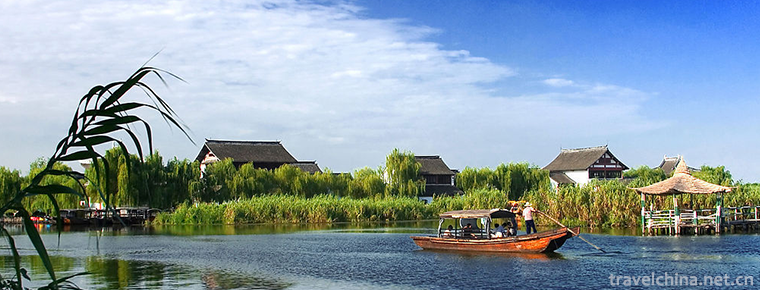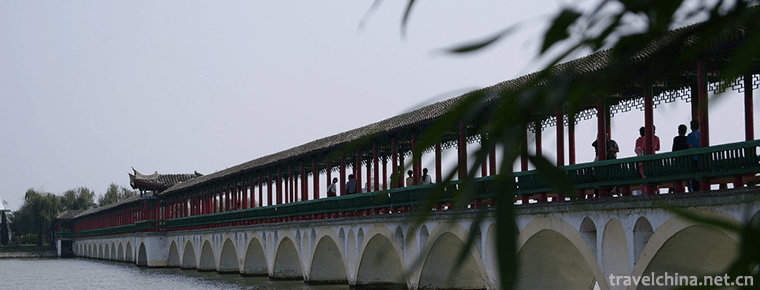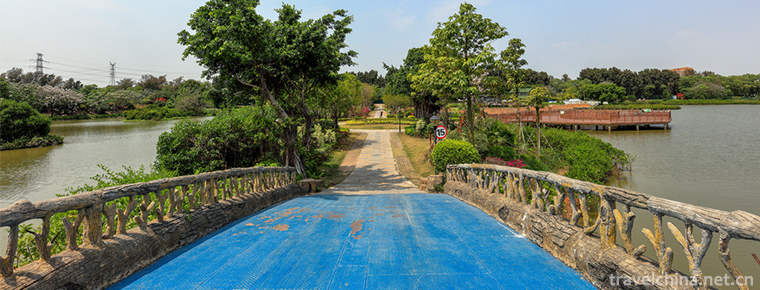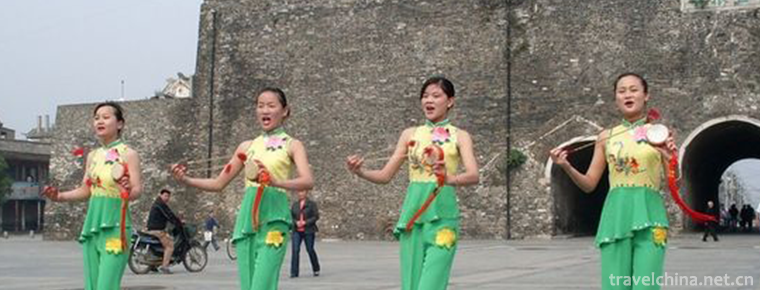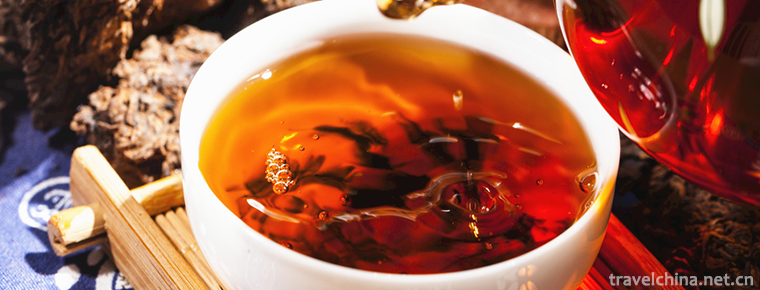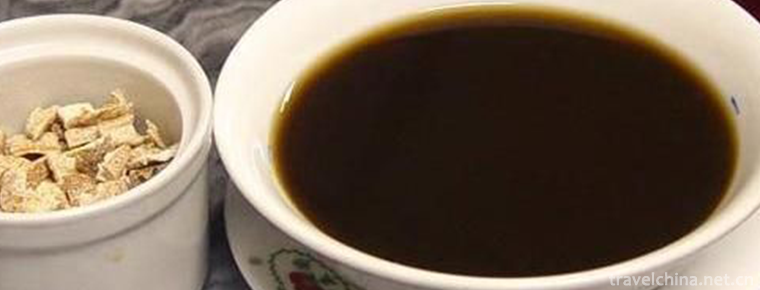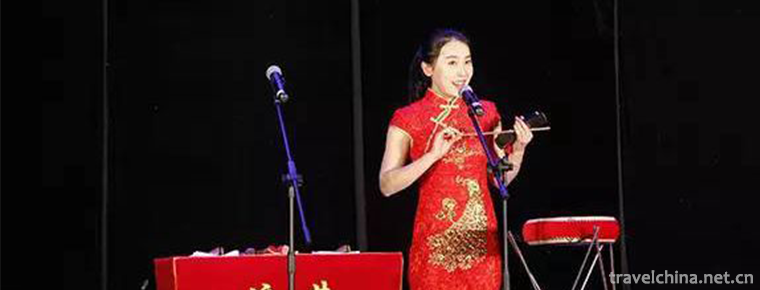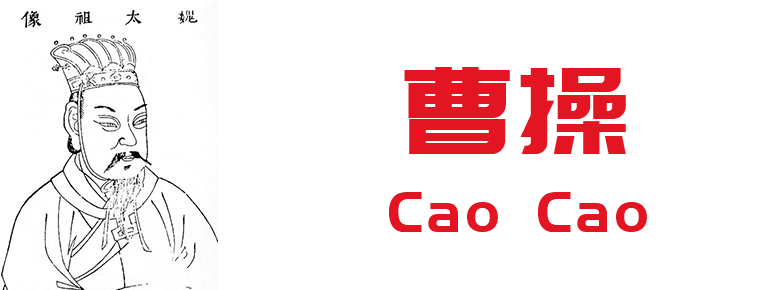Lanzhou Taiping Drum
Lanzhou Taiping Drum
Lanzhou Taiping Drum, a traditional dance in Lanzhou City, Gansu Province, is one of the national intangible cultural heritage.
Lanzhou Taiping Drum is a kind of Han inspiration with strong northwest flavor, which is mainly spread in Lanzhou, Jiuquan and other places in Gansu Province. Because it contains the good moral of celebrating Taiping, it is one of the most favorite performances of the local people. Lanzhou Taiping Drum is known as "the first drum in the world", and it is also known as "the Five Drums of China" together with Ansai waist drum, prestigious Gong drum, Kaifeng Pangu and Fengyang flower drum.
On May 20, 2006, Lanzhou Taiping Drum was listed as the first national intangible cultural heritage list, project number: III-15.
Historical evolution
Taiping Drum appeared in the Western Han Dynasty. In the second year of the Yuan Dynasty, Emperor Wudi of the Han Dynasty opened up the Silk Road in the Western Regions, and the eastern and Western cultures converged. At that time, drums were mostly used for sacrifice, dancing and music, besides encouraging morale in war. According to the "Jade Sea" records: "Drums such as lacquer barrels, both ends can be attacked," this is the early Taiping Drum.
In the early Ming Dynasty, Zhu Yuanzhang ordered Xu Da and others to march westward to recapture Qingyang and Lintao, and then seize Lanzhou. Only the Northern King of the Yellow River Baocheng had the Yuan Army to defend and could not be attacked for a long time. On the Lantern Festival, Xu Da designed to dress up as a social fire brigade to enter the city, hiding weapons in drums and mixing them into the city. With the sound of gunfire, the generals and men inside and outside the city should join forces to defeat the Yuan Army and recover the city pool. In order to celebrate the victory, we hope that the world will be peaceful. That is to say, we call this drum Taiping Drum. Because this happened during the Spring Festival, people agreed that the Taiping Drum is an indispensable performance item in the Spring Festival social fire performance. It has become a way of expressing people's desire for peace and peace in the world.
Taiping drum is one of the earliest instruments invented by human beings. Lanzhou Museum has a collection of painted pottery drums unearthed from the Neolithic Majiayao kiln in Leshanping, Yongdeng County, Lanzhou City. Historians call them the "ancestors" of drums. It is very similar to the shape of today's Taiping Drum and is regarded as the embryonic form of Taiping Drum.
Since the founding of the People's Republic of China, Lanzhou Taiping Drum Team has performed more than 200 times in various parts of the country every year, and 11 Taiping Drum Teams have been set up in Xinjiang, Ningxia and Henan, thus effectively promoting and publicizing Lanzhou Taiping Drum throughout the country.
In 2012, Lanzhou issued an invitation to the world to visit Gansu: "China's northwest tour, starting in Lanzhou", which attracted about 17 million people from home and abroad to Gansu.
Inheritance and protection
Inheritance value
Taiping drum is one of the earliest instruments invented by human beings. The Neolithic Majiayao painted pottery drum unearthed in Leshanping, Yongdeng County, Lanzhou City, is called the "ancestor" of drum by historians. It is very similar to the shape of today's Taiping Drum and is regarded as the embryonic form of Taiping Drum. Lanzhou Taiping Drum has a history of more than 600 years. It is known as "the first drum in the world". It spreads in Lanzhou area and has strong northwest characteristics and artistic charm. The Taiping Encouragement in Lanzhou is not only of positive significance to inherit and enrich the Chinese inspiration culture, but also can promote the academic research of ancient Chinese dance and music.
Inheritance status
Since the 21st century, Lanzhou Taiping Drum is experiencing a development crisis. Although Lanzhou Taiping Drum has a long history among the people and artists are all over the world, for a long time, large-scale Taiping Drum activities have been limited to the Spring Festival period, but also limited to village clubs. The performing techniques are also lack of communication, so it is submerged in various other folk techniques. Taiping drum performers are not connected, resulting in the overall number of Taiping drum activities is not as good as before. Measures should be taken to strengthen the excavation, protection, collation and improvement of Lanzhou Taiping Drum.
Inheriting characters
Wei Yonghong, male, is the representative successor of Lanzhou Taiping Drum, the first national intangible cultural heritage project, which was declared by Lanzhou City, Gansu Province.
Mu Zhengfa, male, Han nationality, born in Lanzhou, Gansu Province in 1955. The first batch of national intangible cultural heritage projects Lanzhou Taiping Drum representative successor, Lanzhou City, Gansu Province, declared.
protective measures
Gansu Province culture, tourism and other relevant departments have now realized the development problems faced by Lanzhou Taiping Drum, and gradually increased the protection efforts. Lanzhou Taiping Drum Heritage and Protection Base in Heishichuan Township of Gaolan County has been put on the agenda. The base is expected to cover an area of more than 40,000 square meters with a planned investment of 47 million yuan. It will build exhibition halls, Taiping Drum Plaza, production workshop, sales hall, multimedia exhibition hall and so on.
With the support of the county committee and the county government of Gaolan County in Lanzhou City, Gansu Province, the project of Taiping Drum Training Base in Lanzhou has been officially approved. After the completion of the project, the production, protection, research and development and training of Taiping Drum will be integrated, which will provide a real platform for inheritance and development of Taiping Drum culture, and will be comprehensively protected and developed. Taiping Drum will become a "fine article" in Gansu and even in the whole country. Change ".
social influence
Important performance
In 1990, the 11th Asian Games were held in Beijing. Lanzhou Taiping Drum will go to Beijing to participate in the performance of the Asian Games Art Festival as a gift program.
In 1999, Gaolan County formed a 100-member Taiping Drum Team to represent Lanzhou in the 50th anniversary of the founding of the People's Republic of China.
In July 2006, Lanzhou Taiping Drum Art Troupe participated in the "gong and drum loud celebration July 1" - Mutianyu Great Wall folk inspiration invitation competition, won the "Drum of Joy" award and organizational award, and participated in the performance of the fourth "Beijing 2008" Olympic Culture Festival.
From August 18 to 23, 2010, Lanzhou Taiping Drum and Stilts paraded in Shanghai World Expo Park.
Prize record
In 2007, Lanzhou Taiping Drum won the Golden Prize of Sun God Bird at the first Chengdu International Intangible Cultural Heritage Festival.
In 2011, Lanzhou Taiping Drum won the Golden Prize of Sun God Bird at the third Chengdu International intangible cultural heritage festival.
In 2013, Lanzhou Taiping Drum won the Best Performance Award of "Sun God Bird" at the 4th Chengdu International Intangible Cultural Heritage Festival, and it was the third time that Lanzhou Taiping Drum won this honor.
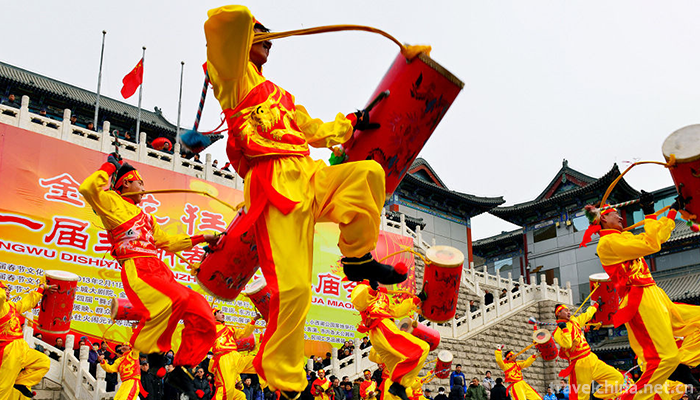
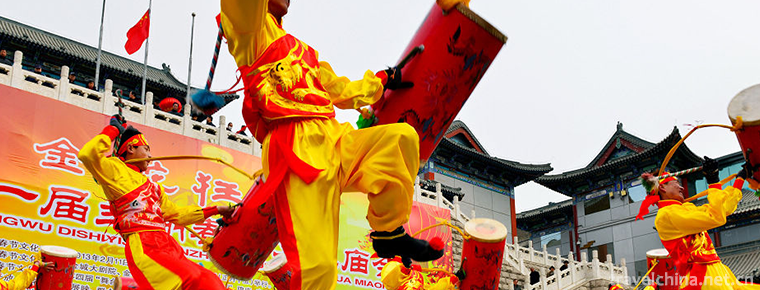
Lanzhou Taiping Drum
-
Pineapple Sweet and Sour Pork
Gu Lu meat, also known as the ancient meat. It is a special dish in Guangdong. This dish dates back to the Qing Dynasty. At that time, many foreigners in the city of Guangzhou
Views: 174 Time 2018-11-02 -
Shanghai Wild Animal Park
Shanghai Wild Animal Park , located at 178 Nanliu Highway, Pudong New Area, Shanghai, is the first National Wildlife Park in China built by the Shanghai Municipal People's Government and the State For
Views: 192 Time 2018-12-05 -
Shajiabang Yushan Shanghu Tourist Area
Shajiabang Yushan Shanghu Tourist Area is located in Changshu, a famous historical and cultural city in the south of the Yangtze River,
Views: 238 Time 2018-12-06 -
Bali River Scenic Area
Bali River Scenic Spot is a national AAAAA-level tourist attraction with "Global 500 Top" environmental protection. It is located in Yingshang County
Views: 279 Time 2018-12-08 -
Shenzhen Maritime Pastoral
Shenzhen Maritime Pastoral Tourist Area is administratively located in Shajing Street, Baoan District, Shenzhen City. It is located at the eastern port of Pearl River estuary
Views: 215 Time 2019-02-08 -
Little Three Gorges
Wushan Xiaoxiao Three Gorges is the general name of Changtan Gorge, Qinwang Gorge and Sanzhuang Gorge on Madu River, a tributary of Dicuixia of Daning River. Wushan Xiaoxiao Three Gorges is known as t
Views: 203 Time 2019-02-25 -
Fengyang folk songs
Fengyang folk song is a traditional folk song in Anhui Province. Fengyang folk song in Fengyang flower drum is one of the important components of Fengyang folk song
Views: 234 Time 2019-04-29 -
Production Techniques of Black Tea
Qimen Black Tea is the only black tea among the top ten famous teas in China. It is produced in Qimen County, Anhui Province. Tea production in Qimen has a long history, which can be
Views: 158 Time 2019-05-03 -
Herbal tea
Herbal tea is the general name of traditional Chinese herbal medicinal plant beverage. Guangdong herbal tea is the representative of traditional Chinese herbal tea culture. Herbal tea is a kind of bev
Views: 214 Time 2019-05-13 -
monologue storytelling accompanied by drumbeats
Plum blossom drum, born in the middle of the Qing Dynasty, originated in Beijing, is popular in Beijing and Tianjin. Before liberation, the sons and daughters of Beijing Banner People liked to sing me
Views: 273 Time 2019-06-03 -
Cao Cao
Wei Wu Di Cao Cao (155 years - 220 March 15th), the name is Geely, the word Meng De, nicknamed hide. Prefectural governor of Yuzhou Qiao (today) Anhui Bozhou Person . Eastern Han Dynasty Outstanding i
Views: 398 Time 2019-09-07 -
Red Army ferry scenic spot in Cangxi County
Cangxi Red Army ferry is located in Cangxi County, Sichuan Province. There is an ancient ferry by the Jialing River in Tashan Bay 3 km southeast of Cangxi city. Close to the mountain and by the water, the terrain is very dangerous, the rocks are steep, and the trees are green. Jialing River from north to south, beautiful scenery.
Views: 331 Time 2020-11-08


